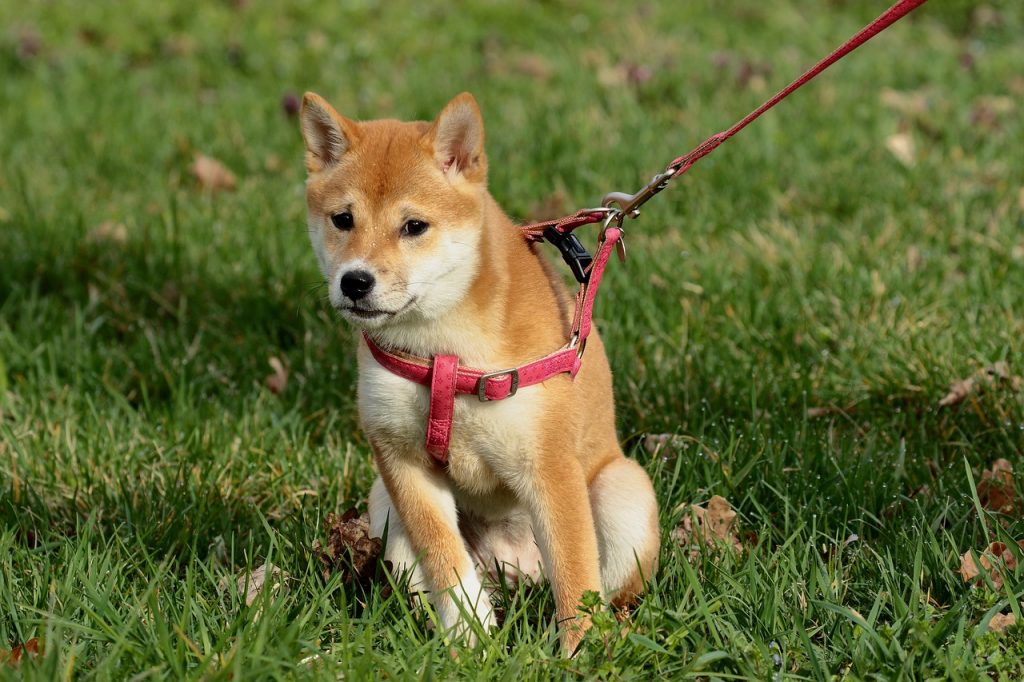
During the past 13 years I've been lucky enough to enjoy the company of two dogs while walking, our dog Almo (who is sadly no longer with us), and Joker.
Almo was a Collie/Sheltie cross. He had the short Sheltie legs, but the sturdy body and strong neck of a Collie. Yep. He was pretty low to the ground, and had a barrel chest, which made him pretty powerful. Being 85 pounds didn't hurt either. He was also very stubborn and single-minded.
I started out using a choke chain to try to train Almo how to walk nice. This didn't work. His neck and fur were so thick and his willpower so strong that he would risk injuring himself before he would stop pulling.
So, I switched to a regular collar. It seemed more humane. But he would pull and pull, even as he gasped for air.
Back at the pet supply store, I held a nose harness in one hand and body harness in the other. Because of his low centre of gravity, I decided on the body harness.
At first, he walked carefully. It was odd for him to have straps around his chest and behind his front legs, I suppose. But he quickly got used to it. And with the leash attached to his back and the control focused on his barrel chest, he responded quickly to just a slight tug. He didn't pull anymore and our walks were no longer a power struggle between him and me.
Joker is an eight-year-old Australian Shepherd/German Shepherd Cross. He weighs in at about 95 pounds and while he can be single-minded, he is less stubborn and more of a thinker than Almo was.
Because of the lack of success with the choke chain and the regular neck collar with Almo, I decided that perhaps the body harness would be a good place to start.
When I first put the harness on him, to say he didn't like it at all was an understatement. He jumped around and bucked like a wild horse. But after a while, when he figured out I wasn't giving in to his drama, he settled down. And he actually walked well for the first little while. I suppose it was because he was busy figuring out how to get the better of me.
And he did.
One day he saw a dog he wanted to get closer to (Joker is a herding dog, so he naturally thinks that all other animals should be under his control). Instead of just pulling, which he knew wouldn't work, he reared up and then used all his weight to pull me when he hit the ground.
It was the middle of winter and we were on a hill, so I ended up skiing behind him. I was surprised that he had used his weight as he did to get to where he wanted to go; the other dog's owner and her little dog were surprised to see us charging toward them; and Joker was very proud of himself.
From then on in, I got him to sit whenever another dog approached, but that didn't help if he decided to pull. He had learned how to use his weight and the body harness to his advantage. It was definitely time to try something else.
So, I bought the nose harness. And he hates it, but only because it stops him from rearing up and pulling me.
The nose harness has given me back control. When his front paws leave the ground, I can pull him back down with little effort.
It took some trial and error to find the right harness for both my dogs. And it is important that you do the same - if you want to enjoy your walks and let others around you enjoy theirs as well.
What constitutes the right harness? One that is comfortable for him, but controls his pulling with as little effort as possible for you.
